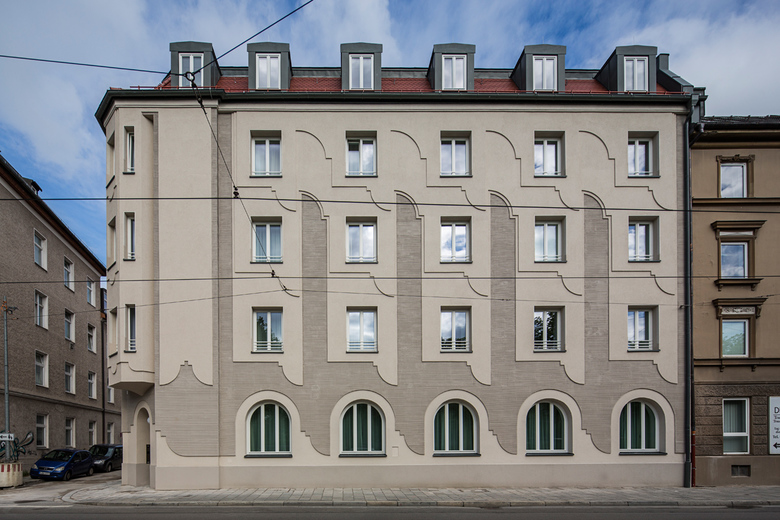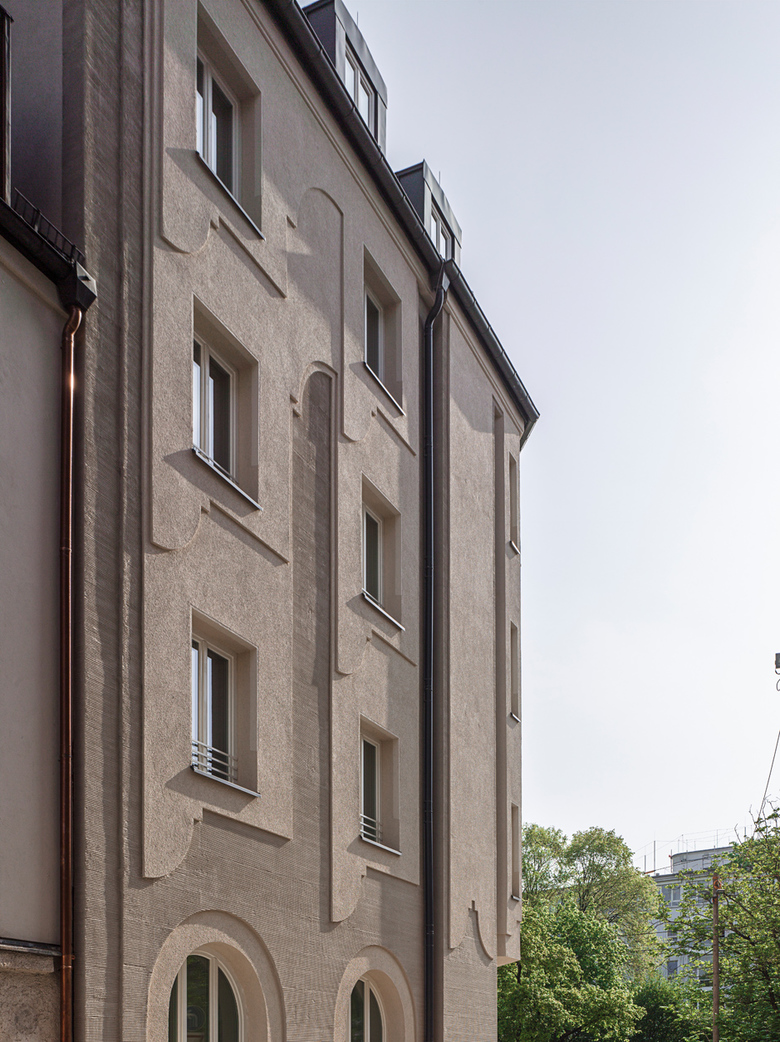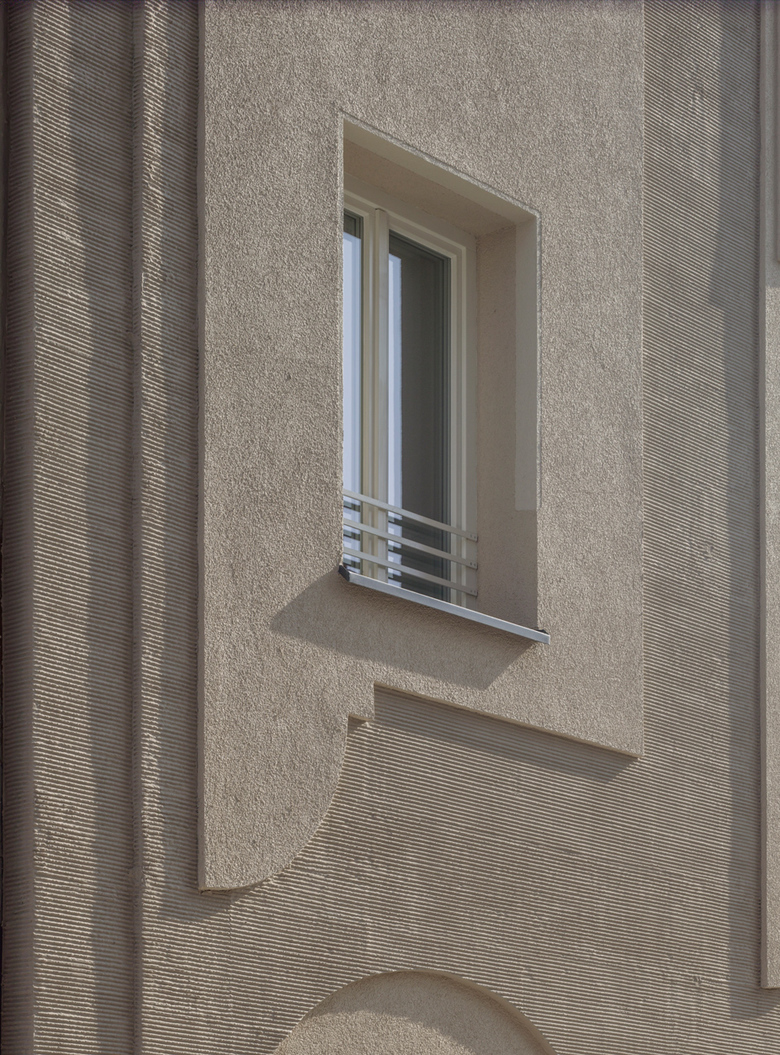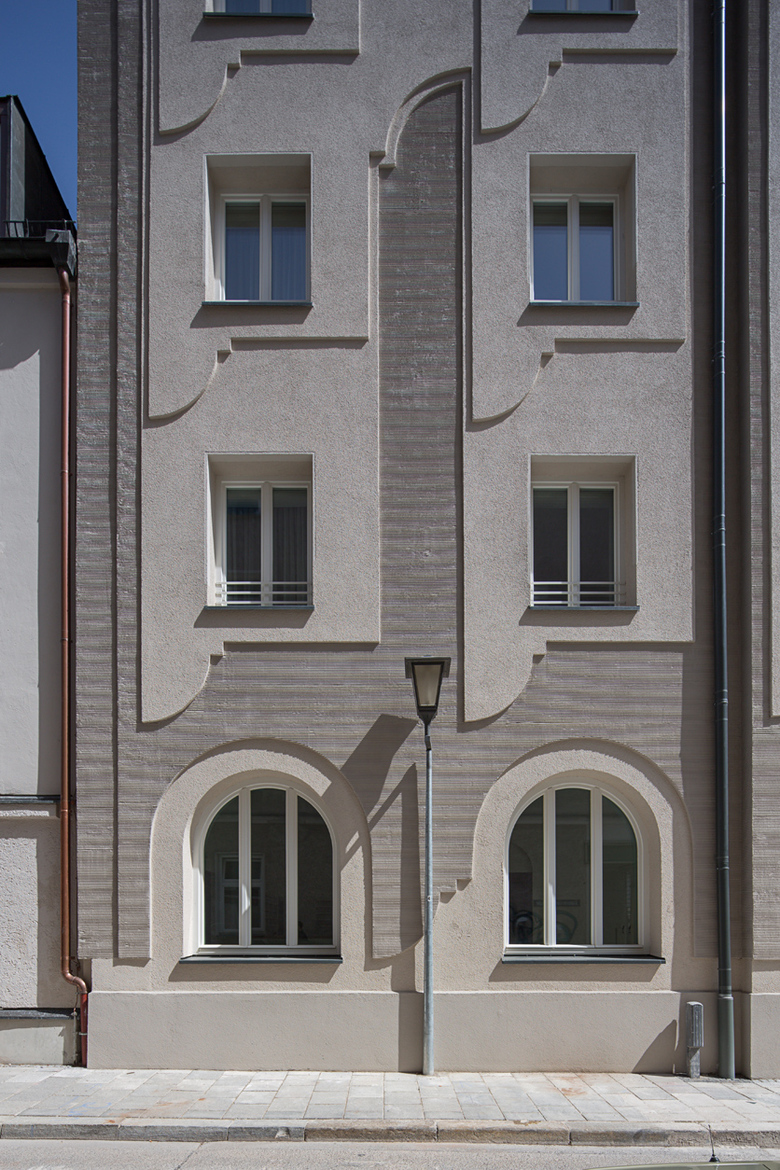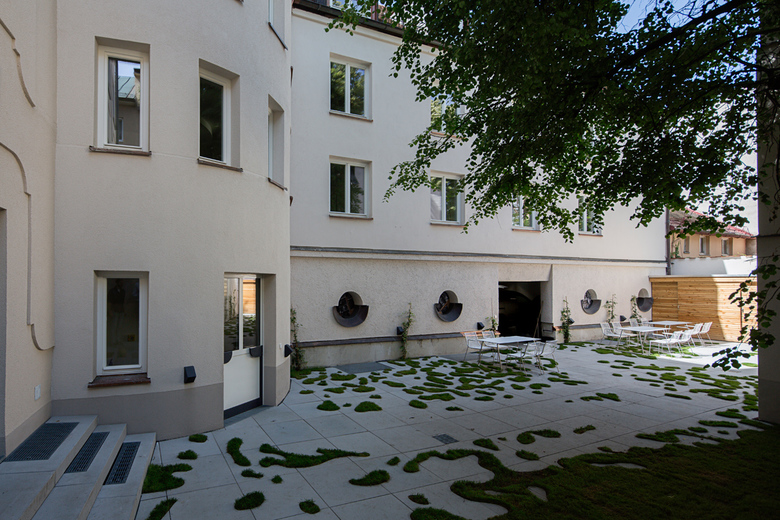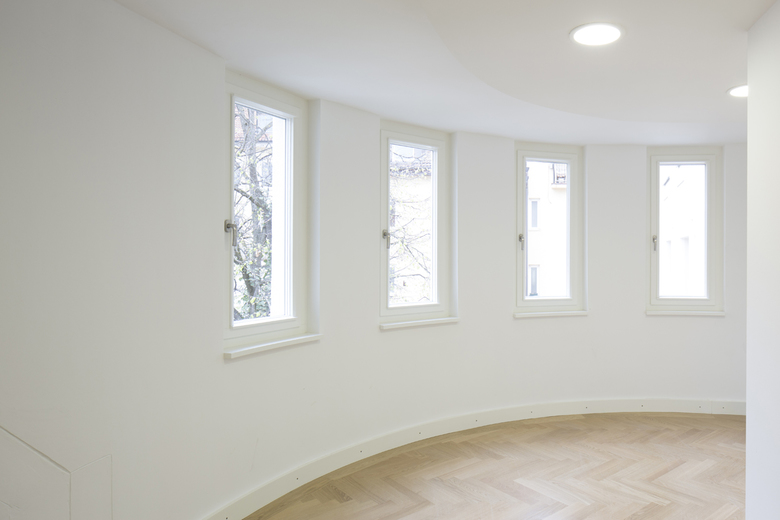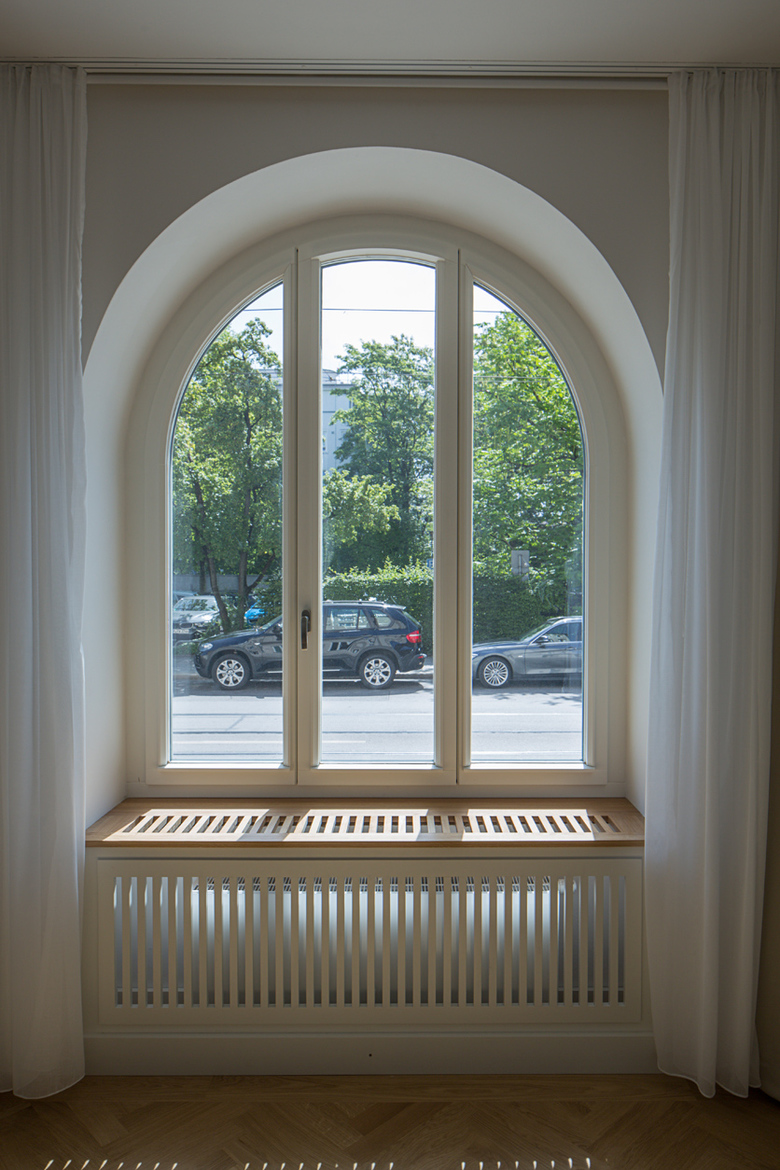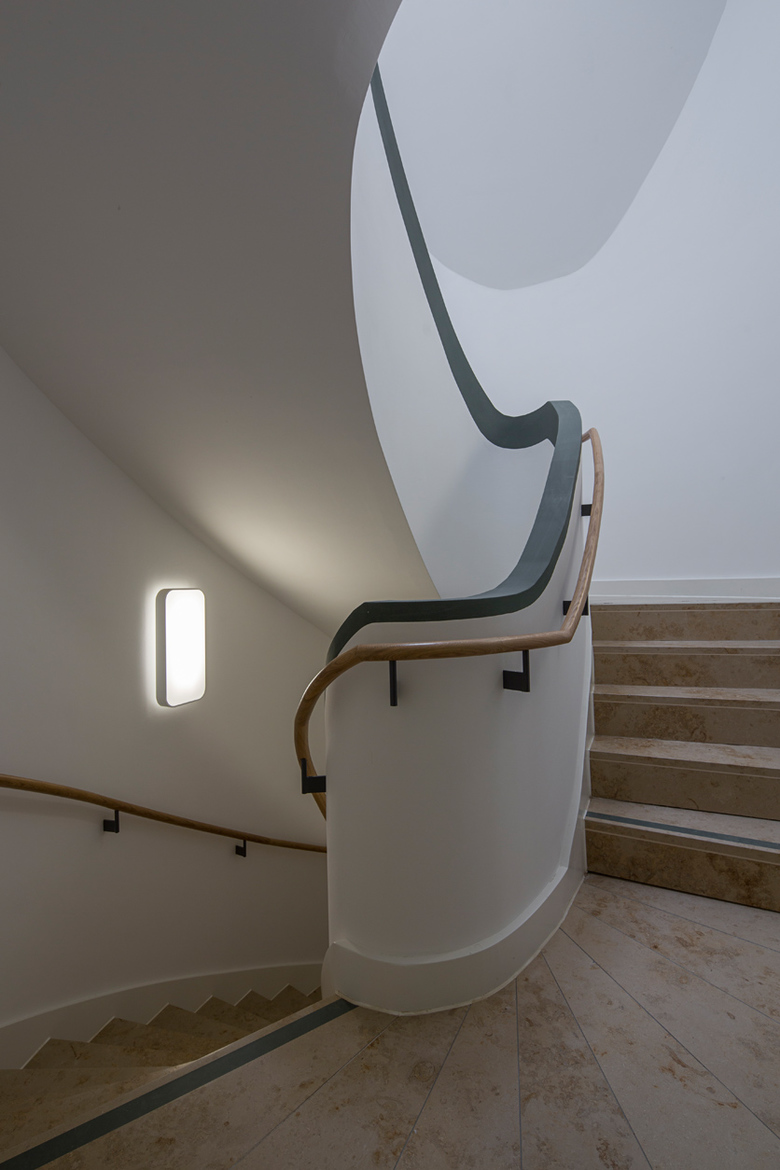Renovation House of Representatives Ismaninger Straße
Munich
- Architects
- Hild und K
- Location
- Ismaninger Straße, Munich
- Year
- 2014
- Client
- Bayerischer Landtag, vertreten durch Staatliches Bauamt München 2
- Team
- Andreas Hild, Dionys Ottl, Matthias Haber, Markus Schubert, Sebastian Klich, Chrisa Lazariotou, Rafal Ramatowski, Amelie Walter
Stucco decoration and climate protection – The building in Munich’s Ismaninger Strasse, situated close to the Maximilianeum, is comprised of a townhouse dating back to the beginning of the 19th century and of two more recent annexes. Since the 1970ies, the State Parliament of Bavaria has been using it. The rooms and interior access ways of the building, however, no longer met today’s standards. Extensive refurbishment was thus required to also ensure accessibility for persons with disabilities.
The general restoration will also contribute to climate change mitigation by reducing overall energy consumption: The “EnEV 2009” (Energy Saving Ordinance of 2009) will be undercut by over 30%, in respect to requirements regarding the exterior insulation and primary energy consumption. This was achieved by equipping the façade of the building with a thermal insulation composite system. New windows with triple glazing were inserted and the building was connected to the district-heating network.
Additionally, as the building is situated close to various listed buildings, the composition of the new exterior needed to be carefully designed. The façade now presents itself as a modern interpretation of the surrounding traditional plasterwork, both as regards stucco ornamentation and plastering structures. The structural particularities of this building were the force behind this specific interpretation: As the thickness of the exterior walls decreases upwards, the required insulation thickness increases from storey to storey. This was used as a formal principle in the structuring of the façade. Simultaneously, flat surfaces, where water could collect and possibly damage the façade had to be avoided by all means. The relief has thus become a witness of the aesthetic handling of given structural conditions.
After the general renovation, the building holds 40 offices for the Representatives and three meeting rooms. The charm of the old building remains reflected in the panelled doors and newly installed herringbone parquet flooring. Natural stone inlays in the stairway in the entrance hall are reminiscent of the sophisticated atmosphere of the era it was built in. A cast-iron support uncovered during the restoration has now been exposed and carefully integrated. This witness of a long past time also contributes to the architectural whole: With this modern interpretation of traditional building structures, the House of Representatives in the Ismaninger Strasse has now gained new vigour within its architectural context.
Related Projects
Magazine
-
Lowtech im Regenwald
Today
-
Kérés KITA für den TUM-Campus
1 day ago
